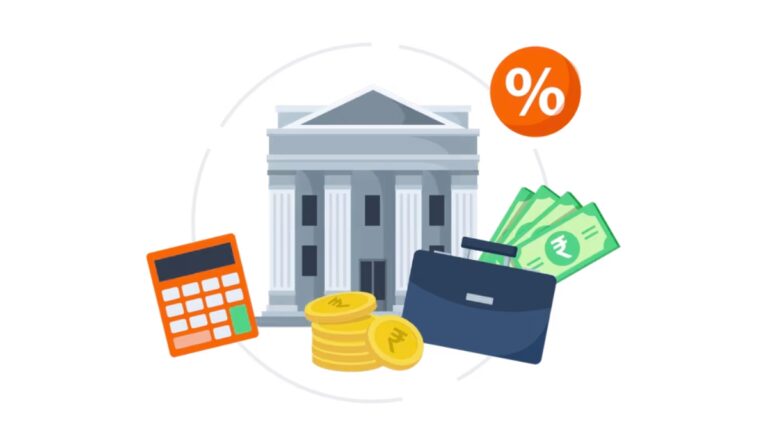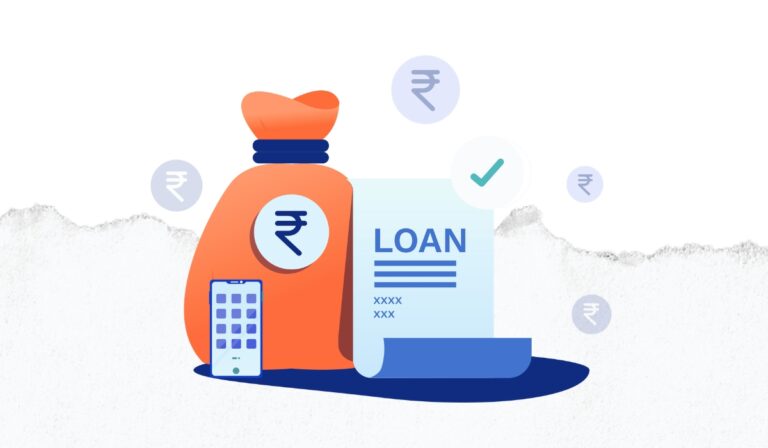A Debt-to-income ratio is a financial standard that gives a real-time comparison of an individual’s debt and his total monthly income. This ratio is calculated by devising the total debt by the gross income and is a key indicator of one’s financial health. The lower the DTI ratio is, the higher the individual’s capacity to pay off their debts, and also aids financial planning. In this blog, we delve deeply into the nuances of the Debt-to-Income ratio.
What is the Debt-to-Income (DTI) Ratio?
A Debt to Income ratio is a financial benchmark that offers a real-time comparison of an individual’s income and debt. It is a real-time indicator of a person’s financial health and is assessed by lenders to know if they are eligible for loans. Lenders assess the DTI ratio to assess creditworthiness and thus impact the loan approvals and interest rates. A low DTI is considered favourable as it suggests that an individual is financially strong, while a high DTI suggests that an individual is not able to manage his debt properly.
Breakdown of DTI Ratio
DTI ratio comprises two elements, namely, debt and income. A proper balance between the two helps to determine the actual DTI ratio and the financial stability of an individual. Get a breakdown of the same in the section below:
- The first component of the DTI ratio is debt, and it refers to the total monthly financial obligations or payments that an individual has to make. Common examples of this include mortgage or rent payments, car loans, credit card payments, student loans, and any other recurring debts.
- Whereas, income is the second component of the ratio and refers to the gross monthly income and all sources of earnings before deductions. Salary, bonuses, commissions, dividends, and rental income are also considered regular sources of income.
Different Types of Debts:
- Secured Debt
Secured debt is usually backed by collateral i.e. property or cash. This means the lender can seize specific assets (such as a home or car) if the borrower fails to repay the loan.
- Unsecured Debt
Unsecured debts are the kind of debts that do not include collateral. In this, the lender relies on the borrower’s creditworthiness and may take legal action in case of non-payment. Credit cards, insurance policies, and certain personal loans are examples of unsecured debts.
- Revolving Debt
Credit card is the perfect example of revolving debt and is open-ended. In this, the borrowers have to continuously borrow and repay up to a credit limit. The outstanding balance fluctuates each month based on an individual’s spending limits.
Various Income Sources:
The following are the major income sources that are evaluated by the lenders to know about their DTI ratio:
- Salary – This is a fixed regular payment that is received by the individual if he is an employee of a company or organization. This payment has to be received on a monthly or bi-weekly basis, often from an employer.
- Bonus – Bonuses are the additional compensation that an individual is liable to get beyond the regular salary based on performance or company profitability.
- Commission – This is the extra earnings that an individual receives based on a percentage of sales or transactions.
- Dividends – This amount is received by the individual if he is a stakeholder in the profit of any company.
- Other Income Streams – This can include income from rental properties, alimony, child support, freelance work, or any other regular sources of funds.
How to calculate the DTI Ratio, and What is the formula?
Individuals have to use the following formula to easily calculate their Debt to income ratio formula:
| DTI Ratio = Total Monthly Debt Payments/Gross Monthly Income × 100 |
In this formula, Total Monthly Debt Payments is the sum of all EMIs and credit card payments. Gross Monthly Income is your total income for a month.
DTI Ratio Calculation Example:
Let us understand the debt-to-income ratio with the help of an example:
Mr X is trying to get a home loan, and for that, he needs to figure out his debt to income ratio,
Mr X’s monthly salary is ₹50,000
His expenses are:
- Car Loan EMI = ₹15,000
- Credit card bill = ₹ 6,000 (approximately every month)
The total debt that he pays every month is ₹21,000
Putting the numbers in the DTI ratio formula we get,
21000/50000 × 100 = 42.
Factors Affecting DTI Ratio
Technically, a DTI Ratio is a parameter that checks if the lender is capable of handling his debts easily. There are several factors that affect the DTI ratio and are crucial for financial planning. Some of these factors are mentioned below:
- The income of the individual is the first factor that determines the DTI ratio. High income makes the lender flexible in managing debt, allowing them to meet their expenses easily
- The amount of existing debt a person carries significantly impacts their DTI. This includes mortgage or rent payments, car loans, credit card payments, student loans, and any other monthly debt obligations
- The interest rate that an individual is paying for their existing loans also affects the DTI ratio. Higher interest rates mean high EMI amounts that can increase the DTI. A low DTI can be ascertained by opting for loans with low-interest rates
- Credit card bill repayment also impacts the DTI ratio. One should start opting for a low credit card balance or pay off a high-interest rate balance to lower the ratio
- For many individuals, housing costs, including mortgage or rent payments, property taxes, and homeowners’ insurance, constitute a substantial portion of their monthly expenses. Changes in these costs can directly impact DTI. For example, taking on a larger mortgage or experiencing a rent increase can raise DTI.
Interpreting Your DTI Ratio
Understanding Debt-to-Income (DTI) ratio benchmarks is vital for financial assessment. Ideally, a DTI ratio that is less than 20%, makes the lenders financially stable with a perfect balance between debt and income. The average range typically spans from 20-36%, reflecting a moderate yet manageable debt load. However, a high DTI, surpassing 36%, suggests a potential strain on finances, signalling a need for careful management.
A high DTI ratio is not considered a very good sign for a borrower as lenders consider it as a risk. This can result in the cancellation of their loan approval, and they might be offered a high rate of interest. This is because it shows that the lender is not capable of repaying the loan and also does not have enough savings or investment to handle expenses. A high DTI is also a sign of financial instability, negative credit score, and economic well-being.
Also, read: How to increase CIBIL/Credit Score?
Benefits of a Low DTI Ratio
The following are the major benefits of maintaining a low DTI ratio:
- A low DTI ratio influences the credit score positivity, thus enhancing the overall creditworthiness.
- Maintaining a low DTI encourages disciplined budgeting. It promotes a balanced financial approach, allowing individuals to prioritize savings and investments for future goals.
- With lower debt obligations, individuals can save more for emergencies, retirement, or major life events, ensuring a more secure financial future.
- Individuals with a low DTI are better positioned to make sound financial decisions. They have the flexibility to navigate unexpected expenses and pursue opportunities without being burdened by excessive debt.
- Lenders prefer borrowers with a low DTI, increasing the likelihood of loan approvals. It signals a higher capacity to take on additional debt responsibly.
- A low DTI often leads to more favourable interest rates on loans. Lenders perceive lower risk in individuals with a balanced DTI, resulting in reduced borrowing costs.
- Individuals with a low DTI have more financial flexibility. They can allocate a larger portion of their income towards savings, investments, and discretionary spending.
- Managing a low DTI reduces financial stress on individuals. One can easily meet their loans without straining their budget, thus contributing to overall well-being.
Managing Your DTI Ratio
The following tips should be kept in mind to manage the DTI ratio efficiently:
- You should implement a systematic debt repayment plan by prioritizing high-interest loans. You should choose from jobs that help to increase your income. Go for refinancing your loans with flexible terms to reduce monthly payments. You can also cut down unnecessary expenses and reallocate funds towards debt repayment to reduce the Debt-to-Income (DTI) ratio.
- One has to manage their income and expenses to achieve a balanced Debt-to-Income (DTI). While reducing debt is crucial, increasing income is equally vital. Consistently optimizing both aspects ensures a harmonious balance, fostering long-term financial stability.
- One of the major ways to manage the DTI ratio is to opt for loans with high-interest rates and small tenure. Increase your income through additional work and avoid taking on new debts to adjust a healthy DTI ratio for sustained financial stability.
DTI Ratio and Lenders
Lenders use the debt-to-income (DTI) ratio to determine the borrower’s financial health. This ratio is curated by comparing the monthly debt payment to income, thus checking if they can manage additional debt easily. As per the rules, a low DTI showcases that a borrower has stable financial health and can easily handle financial obligations and loans.
DTI ratios also play an important role in determining the approval chances of loans. The lenders prefer borrowers who have a low DTI ratio as it shows that they are financially healthy. The low ratio also suggests that these borrowers can go to default at a very low rate. This makes them eligible for getting a secured loan faster as compared to those having a high DTI ratio.
The relationship between the DTI ratio and borrowing cost is very significant. Those with a low DTI ratio have a high probability of getting favourable interest rates. This in turn reduces the risk of defaulter for debt repayment. A high DTI ratio can lead to lenders charging higher interest rates and thus impact the overall cost of borrowing.
DTI Ratio and Personal Finance
If you are looking for financial management with a high credit score, then a low DTI ratio will do it for you. This ratio reflects the total proportion of income concerning debt repayment. Whereas, a low DTI ratio suggests that a borrower will be able to meet financial obligations, thus affecting creditworthiness.
A balanced DTI ratio contributes to the long-term financial stability of the individuals. By managing this, the individuals can minimize the financial burden on themselves. This prudent approach reduces the risk of default on financial obligations, fostering a stable and secure financial foundation over time.
Maintaining a positive DTI ratio is very crucial for successful financial planning. A perfect ratio allows financial institutions to allot financial resources most efficiently. With a positive DTI ratio, one can also avoid debt burden and channel the income for savings and investment, thus creating a robust financial status.
FAQs
What is DTI full form?
The full form of DTI in financial terms is the Debt-to-Income (DTI) Ratio.
Can you define the debt to income ratio and why it’s critical?
Yes, the Debt-to-Income (DTI) Ratio assesses an individual’s potential to pay back their debts and showcases their financial health.
How do I calculate my debt to income ratio manually?
One can calculate my debt to income ratio manually by dividing the Total Monthly Debt Payments by Gross Monthly Income.
What is considered a good debt-to-income ratio in India?
A DTI ratio of less than 20% is considered a good debt to income ratio in India.
How can I use a DTI calculator specifically tailored for Indian users?
To use a DTI calculator tailored for Indian users, simply input your total monthly income and monthly debts into the calculator. It computes your DTI ratio by dividing your total debts by your gross income. This tool, designed with Indian financial practices in mind, helps accurately assess your financial health.
What strategies can be employed to improve my DTI ratio?
One can opt for high interest rates and increase their income sources to improve their DTI ratio.
How does India’s average household debt to income ratio compare to other countries?
India’s average household DTI ratio is lower than many developed nations, reflecting cautious borrowing and a culture of savings. Countries like the USA and Canada have higher ratios due to easier credit access and greater borrowing tendencies.
How does the DTI ratio impact my ability to secure a loan?
The DTI ratio is a crucial indicator of an individual’s overall financial health, thus determining their ability to secure and pay off a loan.
What are the implications of a high DTI ratio on loan applications?
Individuals with a high DTI ratio are not considered good by lenders and thus can lead to rejection of their application form.
Can I improve my DTI ratio by increasing my income?
Yes, one can improve their DTI ratio by increasing their income.
What is the ideal DTI ratio for achieving financial stability?
Ideally, a DTI ratio that is less than 20% is considered perfect for achieving financial stability.
Can a low DTI ratio help me qualify for better loan terms?
A low DTI ratio makes an individual creditworthy and thus improves one’s chances of getting loans.
How do lenders calculate the DTI ratio when evaluating loan applications?
Lenders calculate the DTI ratio by dividing total monthly debt payments by gross monthly income, expressed as a percentage. This helps assess an applicant’s capacity to handle new debt based on existing financial commitments.
Explore PayMe’s Products:
Explore Articles on Personal Finance:




